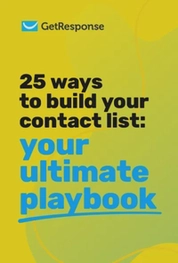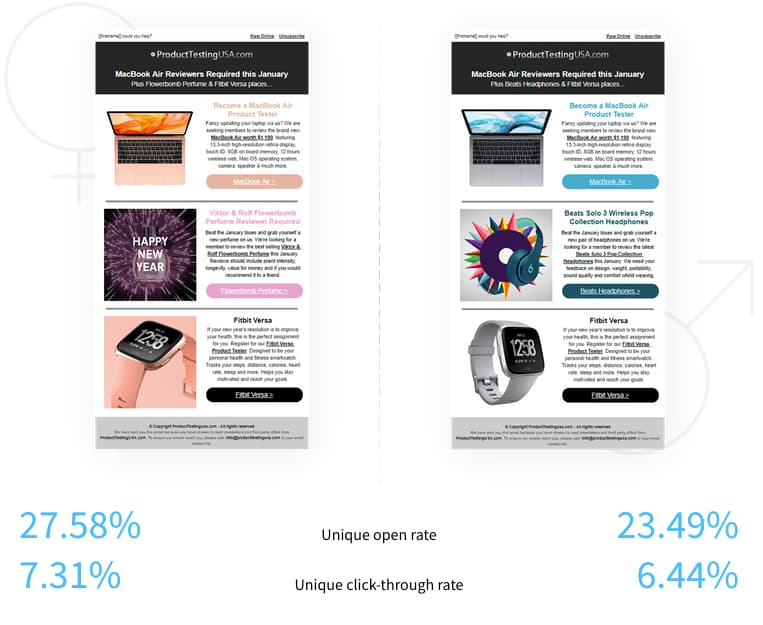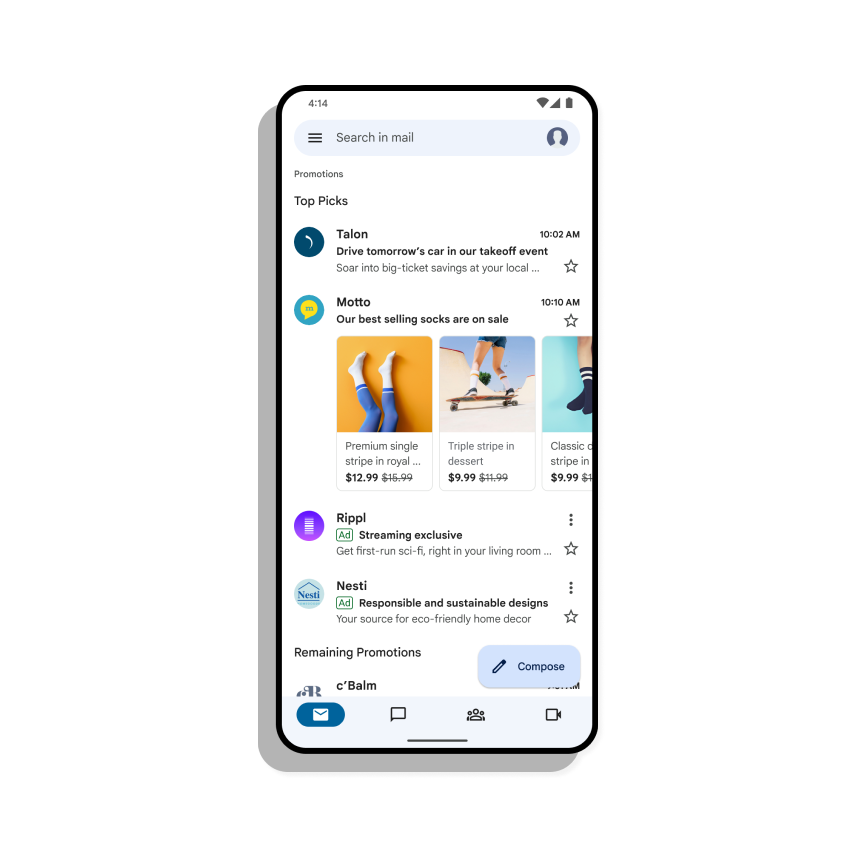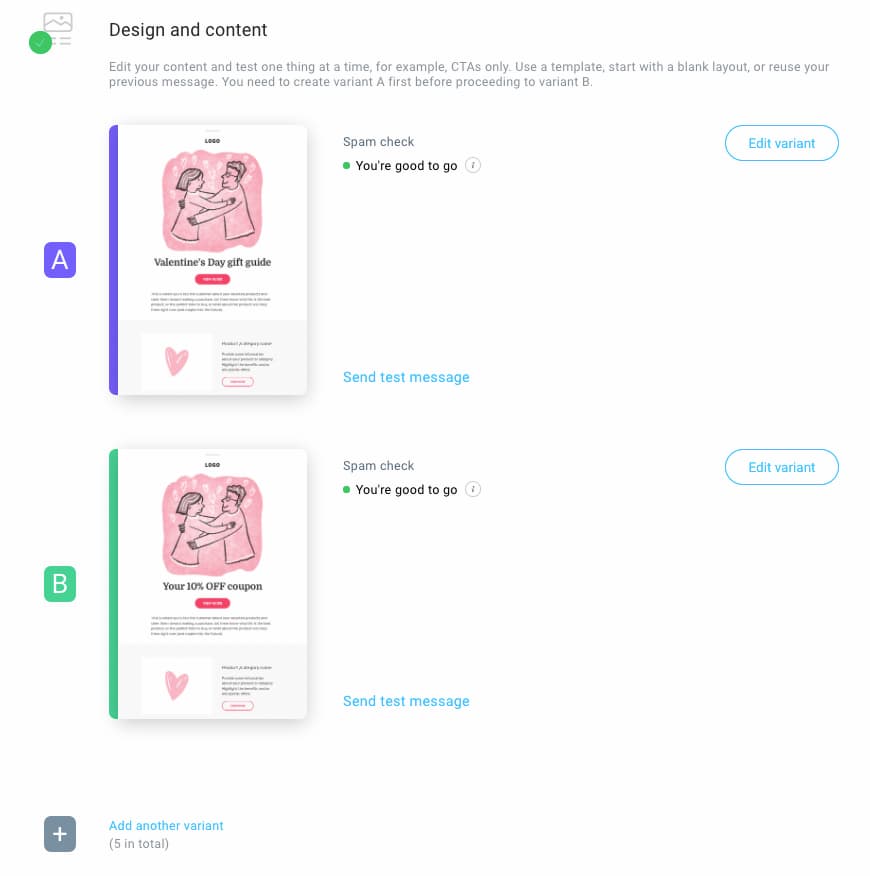Email newsletters remain a powerful tool for communicating and nurturing connections with your audience. Whether you’re a business owner, content creator, or marketer, understanding how to create an email newsletter can help enhance your email marketing strategy and ultimately grow your business.
But where do you start? How do you create an email newsletter that captivates readers and leaves a lasting impact? This article will guide you on how to create a newsletter through seven essential steps. You’ll also learn some key best practices along the way to boost your email marketing efforts. Let’s dive in!
What is an email newsletter?
An email newsletter is a digital publication sent to a subscribed audience via email on a regular basis – often weekly or monthly. Businesses use this email marketing tool to share valuable content, company news, and product updates.
Related:
50 Newsletter Ideas to Keep Your Email Calendar Busy
21 Company Newsletter Ideas: Examples & How-to Guide
Email Marketing Tips for Small Business
Why create an email newsletter?
Creating an email newsletter is an excellent move for several key reasons.
First, it allows you to build and nurture a community of engaged subscribers. Unlike social media posts or website updates, newsletters land directly in your subscribers’ inboxes, offering the opportunity for more personal and focused interactions. Research shows that over 30% of businesses believe newsletters are the best way to nurture leads.
Professional newsletters are also effective tools for driving traffic to your site. By including promotions, discounts, compelling calls to action, and relevant direct links, you can entice subscribers to click through and explore your offerings further.
Another advantage of an email newsletter is its cost-effectiveness and efficiency. Compared to other channels, it’s relatively low-cost and offers a high return on investment of up to 3800%.
Finally, email newsletters are one of the best ways to monetize your email list. Marketers, content creators, and publishers can make significant money through paid newsletters or by including paid ads in their emails.
So, how do you create an engaging newsletter? Let’s go over the key steps and best practices for creating an award-winning newsletter.
How to create a newsletter in 7 easy steps
A successful newsletter involves a strategic approach combining creativity, planning, and proper execution. Here are seven simple steps to help you create one that will impress your subscribers and grow your business.
1. Define your goals
Defining your goals is the crucial first step in creating an impactful email newsletter. Goals create a clear sense of direction and help you determine the key performance indicators (KPIs) to track and evaluate success.
When defining your email newsletter goals, start by determining the general purpose. Why are you creating it in the first place?
The goal of your newsletter could be to:
- Inform and educate subscribers
- Boost sales of your product or service
- Drive traffic to your website or store
- Build customer loyalty
Identifying your purpose will help you stay focused on your goals.

Next, consider who your target audience is. Understanding your audience’s needs, interests, and preferences is essential for creating relevant content that resonates with them. Define your ideal subscriber by considering demographics like age, location, gender, or psychographics like interests, values, and motivation. This will guide your newsletter’s tone and messaging to engage your readers effectively.
With your purpose and target audience sorted, go ahead and develop your SMART goals.
- S – Specific
- M – Measurable
- A – Achievable
- R – Relevant
- T – Time-bound
A great example of a SMART goal for your email newsletter could be:
To increase website traffic by 20% within the next three months by driving more click-throughs from the newsletter to relevant blog posts or landing pages
This is also the perfect time to identify the key metrics you’ll use to measure your newsletter’s performance. Depending on your objectives, the metrics may include open rates, click-through rates, unsubscribe rates, or social shares. In the example above, it’s clear that the metric you’ll use to measure the success of your newsletter is click-through rates.
Read more: Guide to email marketing metrics
2. Choose an email marketing platform
Having the right email newsletter platform in your corner is essential for your email newsletter’s success. Remember, the platform you select will impact your email marketing campaigns’ functionality, deliverability, and overall performance.
So, here are the key features to consider when choosing your email marketing software:
- Ease of use: Look for an email marketing platform with a user-friendly and intuitive interface. Ideally, you want a platform with drag-and-drop functionalities and AI-generative features. This will make creating, designing, and scheduling your newsletters easier without any advanced technical knowledge.
- Email deliverability: Ensure the platform has a good email deliverability reputation. So look for features like authentication protocols and spam testing capabilities to maximize email deliverability rates.
- Templates: The platform should provide a wide range of pre-designed but editable newsletter templates. You should also be able to create custom ones that fit your brand’s style and design.
- List management and segmentation: Effective subscriber list management is vital for organizing and segmenting your subscribers based on demographics, interests, or engagement levels. Look for features that let you segment your audience easily and automate targeted campaigns for better personalization and engagement.
GetResponse is a great example of a platform with remarkable email marketing tools. Our platform provides over 150 free email newsletter templates to choose from.

Customizing these templates is also a breeze, thanks to the drag-and-drop editor. Users can access a two million stock image library and thousands of GIFs. And thanks to our latest feature, the AI email generator, you can create your own custom newsletter in a matter of moments.

GetResponse will help you make data-informed decisions based on your customers’ data. For example, you can create custom contact segments and use dynamic content for better personalization.
Our users also enjoy a proven 99% deliverability since we simplify email authentication processes like DKIM, DMARC, and SPF configuration. There’s also a built-in spam check that helps users avoid spam filters.
We track user behavior and offer A/B testing capabilities to provide advanced email analytics. Additionally, you’ll get customized and visualized reports to inform your decisions.
Naturally, there are many other tools available on the market. To help you make the best decision, we’ve narrowed down and reviewed the best newsletter software tools in 2025.
3. Build your email list
Building an email list is the next critical step. Obviously, you can’t build a successful email newsletter if you don’t have an effective strategy for collecting email addresses in the first place.
So here are some effective strategies to help you build an email list fast. And by the way, platforms like GetResponse come with built-in tools that’ll help you build popups, landing pages, or even webinars, so you won’t need to waste time connecting multiple solutions.
Create compelling sign-up forms: Add user-friendly newsletter sign-up forms and popups to your website or within relevant blog content. Communicate the benefits of subscribing to encourage sign-ups. You can even go further and offer relevant incentives such as ebooks, guides, special offers, or discounts in exchange for email addresses.

Build subscription landing pages: Create dedicated landing pages that highlight the benefits of joining your newsletter. Use clear and persuasive copy, compelling visuals, and a prominent newsletter signup form to capture visitors’ attention.

Take advantage of offline opportunities: Collect email addresses at industry events on a physical sign-up sheet or device. Communicate how the collected email addresses will be used and mention the option to unsubscribe.
Use gated content: Create premium content or lead magnets that are only accessible to website visitors once they subscribe, as shown below. This could include exclusive articles, videos, or case studies. Promote this gated content across your channels to entice visitors to subscribe.

Get active on social media platforms: At first, it’s unlikely you’ll have a budget to invest in paid ads. That’s why you should leverage your social media accounts to drive traffic to your website. Start by engaging your audience on platforms they’re most active on, like Facebook or LinkedIn. Create thought-provoking content and take advantage of these platforms’ organic reach. Inside every other post, make sure to mention that people should visit your profile and sign up for your newsletter.

An ideal email marketing platform provides the necessary features to streamline your email list-building process. For instance, GetResponse offers great pop-up and form builders and a landing page builder.
Finally, to build a healthy email list, always get explicit consent and adhere to applicable data protection laws when collecting and using an email address. Additionally, while it might be tempting, avoid buying an email list. Bought email lists will harm your deliverability and IP reputation since your email recipients didn’t opt in willingly, which is against GDPR guidelines. You’ll also end up with passive newsletter subscribers, who may even report your emails as spam.

25 ways to build your contact list
We’ve compiled a list of 25 tried-and-tested tactics for the success of your future campaigns.
4. Segment your email list
You cannot run a successful email newsletter without segmentation. Email list segmentation is the hack experienced marketers use to run personalized email campaigns that yield incredible results.
According to HubSpot research, personalization is a key email marketing strategy that stands at 72%, only preceded by subscriber segmentation at 78%.
You can segment your email list based on various factors like demographics, interests, purchase history, engagement levels, or any other relevant data.

By understanding your email subscribers’ unique preferences and needs, you can craft highly personalized content that resonates with them. This makes recipients feel valued, increasing the likelihood of engagement and conversion.
Furthermore, segmentation helps you nurture relationships at different customer journey stages. For example, you can create segments for new, loyal, or inactive subscribers. By understanding where subscribers are in their journey, you can send the right email messages at the right time, fostering engagement and guiding them through your conversion funnel.
Use customer data collected through sign-up forms, website interactions, purchase history, or surveys to segment your contact list effectively. You can leverage your email newsletter software’s segmentation and marketing automation capabilities to automate the process based on predefined criteria. Continuously monitor and analyze the results to refine your segments and optimize your content strategy.
5. Plan and write your newsletter
It’s finally time for the fun part of the process — writing your newsletter.
Your content needs to be valuable, informative, and aligned with the purpose and goals of your newsletter. It needs to resonate with your audience.
For instance, to boost sales, you may want to create promotional content like product reviews, how-to guides, and personalized offers. On the other hand, if your goal is to inform and educate your subscribers, you may decide to provide industry insights, tips, and company updates.

Also, email newsletters are typically designed for quick read-throughs, so keep your content interesting, concise, and scannable. Grab attention with an enticing email subject line and include a clear and compelling CTA to encourage further engagement. Then use short paragraphs, bullet points, and subheadings in the body to make your content easy to read.

When designing your email, use the inverted pyramid structure, where the most important details come first. While most readers might not get through your whole newsletter, you still want them to see the key details of the email. Doing this might even entice most to read your newsletter to the end to get more details.

Use templates to streamline the design process and ensure a consistent professional look for your newsletter. GetResponse’s customizable templates will save you time and effort while giving you room for personalization through the intuitive email builder.
Finally, use visuals strategically to enhance the visual appeal of your newsletter. Include relevant images, infographics, or videos to support your newsletter content and make it more engaging. As mentioned, you can access over two million free images from the GetResponse stock image library.
💡 Don’t forget: how your email is previewed can be nearly as important as what’s inside. With email annotations, you can configure how your newsletter is previewed in Gmail’s Promotions tab — showcasing an image or offer snippet that entices opens and gives your content a head start.

Read more:
10 Email Copywriting Tips That Work
6. Test and optimize
If you don’t test and optimize your email newsletter regularly, chances are you’ll be leaving money on the table. Also, consumer behaviors change all the time. Testing your campaigns and making the necessary adjustments ensures you stay on top of these changes. You can test your email newsletter through A/B testing.
A/B testing involves sending variations of your newsletter design elements to a subset of your audience to compare the performance. This shows what resonates best with your subscribers and the most effective approaches to drive better results. You can refine your content, newsletter design, and overall strategy using these insights.

Some of the elements you can test include your headlines, CTA buttons, content layout or visuals, content types, custom color schemes, and font styles.

With the increasing number of email users accessing their accounts on mobile devices, it’s vital that you go for a responsive design. Such designs adapt to different screen sizes and maintain the readability of your newsletters on all devices. This boosts user experience, which in turn boosts subscribers’ engagement levels.
GetResponse offers mobile-focused design tools to help you create responsive newsletters. You can customize and hide specific elements or sections for mobile designs.

After you’ve settled on the right elements, formatting, and newsletter design, it’s always a great idea to send test emails to yourself and the team. Test them on different devices and email clients. You can do this manually or via a built-in tool like the Inbox Preview you’ll find inside GetResponse.
Also, proofread the content and check for any design errors or issues that may have been overlooked. A polished and error-free newsletter reflects professionalism and attention to detail. Lastly, make sure to include the unsubscribe link at the bottom of every email.
Pro tip: Make sure to authenticate your email domain and follow these deliverability best practices to avoid hitting the spam folder.
7. Schedule and send
Congratulations! You’ve designed an engaging newsletter that will captivate your audience. Now it’s time to schedule and send it out. This final step ensures that your newsletter reaches the right people at the right time.
Ensure you’ve set up automated email workflows to nurture your subscribers. These workflows automate tasks like adding subscribers, segmentation, and tracking email activity. They’ll help you send targeted newsletter content that resonates with each subscriber segment.
Next, determine the best time to send your emails. Consider your target audience’s preferences, time zone, work schedules, and typical engagement patterns. If you’re using GetResponse, the Perfect Timing feature makes this really easy. The feature tracks and uses subscribers’ behaviors to inform the best delivery times for each subscriber.

Once you’ve sent the newsletter, monitor its performance using the analytics tools provided by your email service provider. Track key email metrics like open rates, click-through rates, bounce rates, and unsubscribe rates. Analyzing this data will help you understand your audience’s engagement levels and make informed decisions to improve future newsletters.
Time to create your first newsletter
Now that you know what it takes to create a captivating newsletter, it’s time for you to act.
Start by defining your goals and the target audience you want to reach. Make sure you’ve got something informative, engaging, and valuable to share with them.
Then pick an email marketing tool that’ll propel the growth of your newsletter. Look for a solution that offers great list-building capabilities, an intuitive email builder, and great analytics.
While many great solutions are available, I highly recommend you try GetResponse. It’s a comprehensive yet affordable email marketing software perfect for small and medium-sized businesses. It comes packed with newsletter campaign management, email subscription form builder, landing pages, and much more. And you can try it completely free by signing up below:
Once you’ve decided on your new favorite email marketing tool, it’s time for you to turn your ideas into actual emails. Craft your copy, design your newsletter templates, and send them away for your audience to enjoy. And if you ever get stuck, worry not. You can use AI as your helping assistant to get your email newsletters out to the world!
